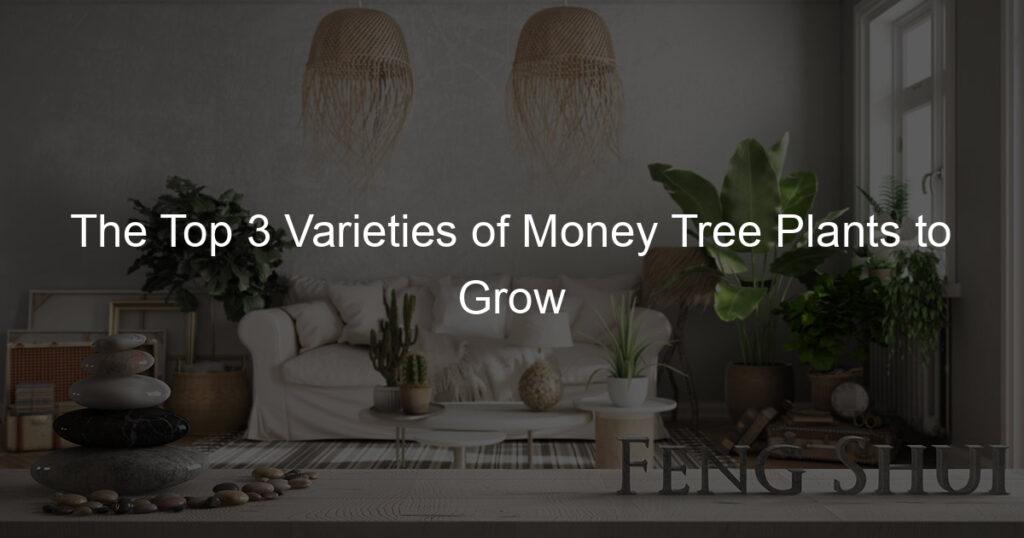Not everyone knows that there are different varieties of money tree plants! In this blog post, we will explore the top 3 varieties of money tree plants to grow.
Whether you are looking for a plant to bring good luck or simply want a beautiful and easy-to-care-for plant, one of these varieties is sure to be perfect for you. Read on to learn more about the top 3 money tree plants!
Which variety of money plants is best?
When deciding which variety of money plants is best for your home, there are a few things to consider. The Pachira Aquatica, commonly referred to as the Malabar chestnut tree, is one popular choice and grows quickly in bright, indirect sunlight with moist soil.
It also has glossy leaves that love humidity. Another option is the Crassula ovata, a slower-growing succulent also known as the Jade Plant or Money Tree. This tropical plant can tolerate low light but prefers bright and direct sun exposure. Both varieties have their benefits and drawbacks, so it’s important to choose one based on your lifestyle and needs.
Are there different types of money tree plants?
Money tree plants have long been said to bring luck and positivity, so it’s no surprise that they have become popular in both indoor and outdoor gardening. But did you know there are several different types of money tree plants?
The most popular one is a Pachira Aquatica, which typically has green leaves shaped like lily pads and a trunk with five braided stems, symbolizing wealth. A less common type is a Pachira Macrocarpa, with dark green leaves and glossy white seedpods. Then there’s the Malabar Chestnut or Saba Nut containing single trunks with upright fronds of waxy green leaves, resembling palm trees.
Lastly, the Bombax Ceiba has bright green rounded leaves and clusters of pink flowers – making it a stunning addition to any home or garden. Whether you’re looking for good luck or just want to add some natural beauty, there’s definitely an ideal money tree plant for everyone!
How many varieties are there in the money plant?
The money plant is certainly a popular ornamental houseplant, but did you know there are many varieties of it? Also known as the pothos or devil’s ivy, the money plant comes in various sizes and colors that range from deep green to golden yellow. Its leaves can also be shaped differently depending on which type of money plant it is.
Some have wide oval leaves while some have slender and wavy ones. The most popular variety is usually the Epipremnum aureum; however, other cultivars also include Aurolitium, Marble Queen, and Neon Pothos among dozens of others. Regardless of the type, all money plants with their lush foliage are easy to care for, making them great additions to any home.
How do I choose a money tree?
Deciding on which money tree to purchase for your indoor space can be a daunting task; you want something that will look nice, won’t take up too much room, and of course, bring in all the wealth and fortune it is promised. To ensure you make the right decision, it’s best to consider both the size of the area where the money tree will place, along with light availability; some require bright indirect sunlight while others prefer shadier spots.
Additionally, investigate how difficult they can be to care for; although easy to maintain overall, some may need more watering or occasional pruning than others. When all these factors have been taken into consideration, locating an attractive money tree—or possibly even two or three—should be achievable.
Which money tree is lucky?
It is often said that money does not grow on trees, but some people believe that certain trees are especially lucky when it comes to financial luck. The beloved crassula ovata, which most of us know as the jade plant or money tree, is one of these plants with a reputation for bringing luck and prosperity.
This small succulent has glossy leaves and thick stems, making it an attractive addition to any home while also allegedly bringing good fortune to its owner. Other popular money trees are the broad-leafed ficus, which brings luck in business dealings; and bonsai money trees, popularly used in Feng Shui to bring stability. Whether these plants really offer special luck remains unknown, but they do help make quite a striking addition to any living space.
How can I make my money plant grow faster?
Growing a money plant can be a fulfilling and rewarding experience that brings many benefits. Adding good soil, proper light exposure, and controlling water levels are all key components to helping your money plant grow faster and stronger.
Fertilizers can provide helpful nutrients for growth as well but should be used in moderation so you don’t accidentally harm the plant with too much. Additionally, considering trimming any dead or damaged leaves from your money plant can encourage new and strong growth. With the correct combination of effort and care, you will soon see a healthy and more vibrant money plant!
Summary
With their varied leaf shapes, vibrant colors, and low-maintenance requirements, money tree plants are perfect choices for any home—indoors or outdoors. For those looking to embrace the symbolic tradition of these lovely plants, there may not be a better option than the classic jade tree.
For a splash of personality, however, the braided money tree is also very popular in many homes. And should you want a subtler yet still sophisticated look for your space, look no further than the golden pothos variety: it’s sure to bring vibrancy and prosperity alike!
Ultimately, regardless of which beautiful money tree you decide on, one thing is for certain: with its rich symbolism and charm—each species will add everlasting style and energy to any household.














